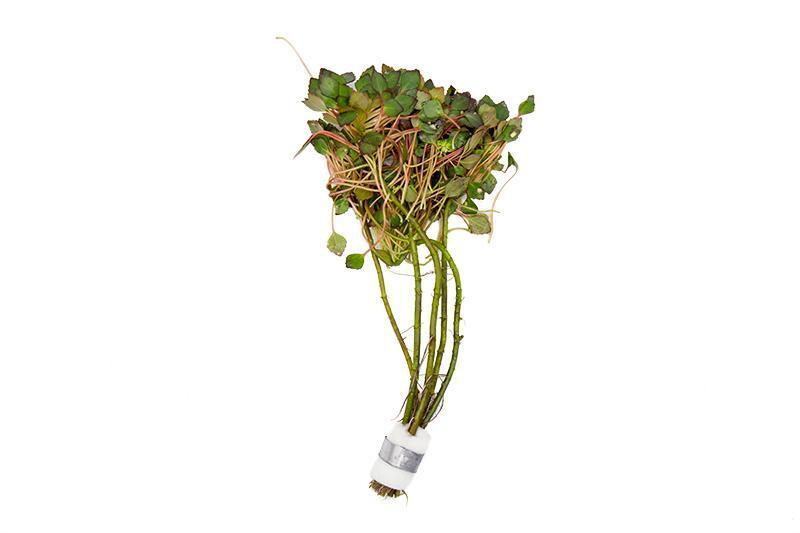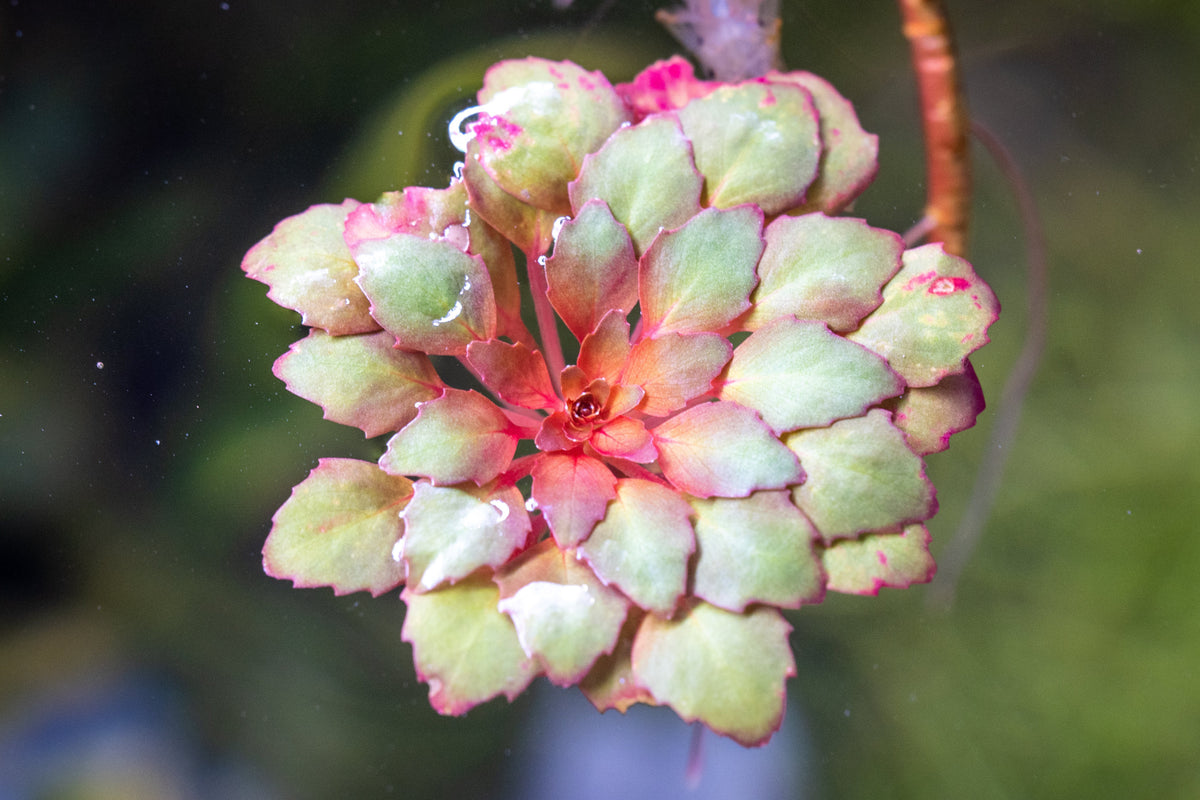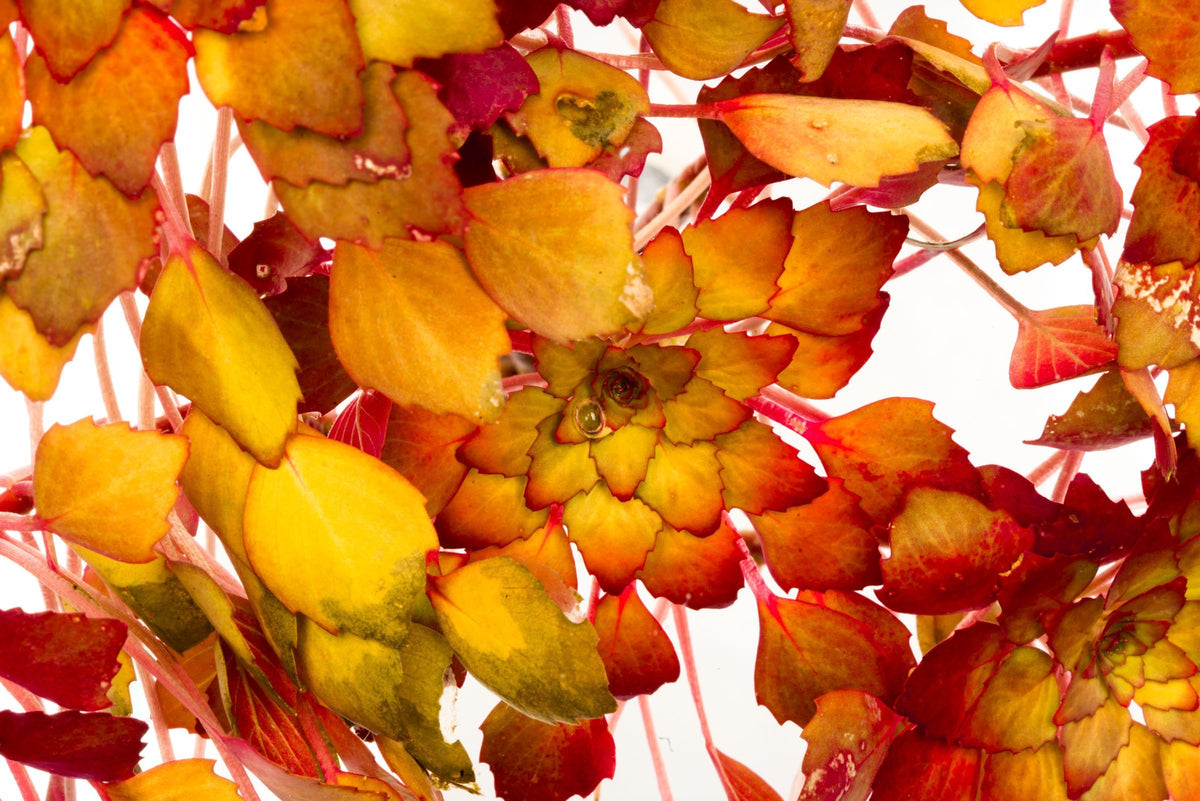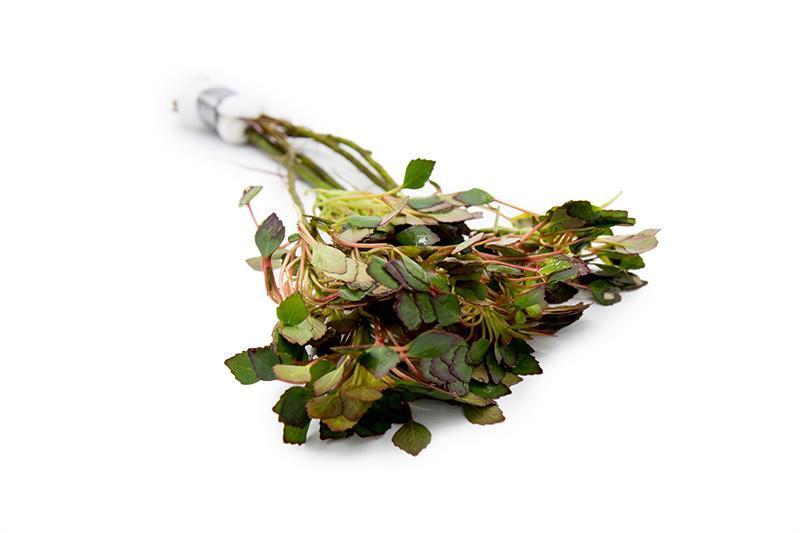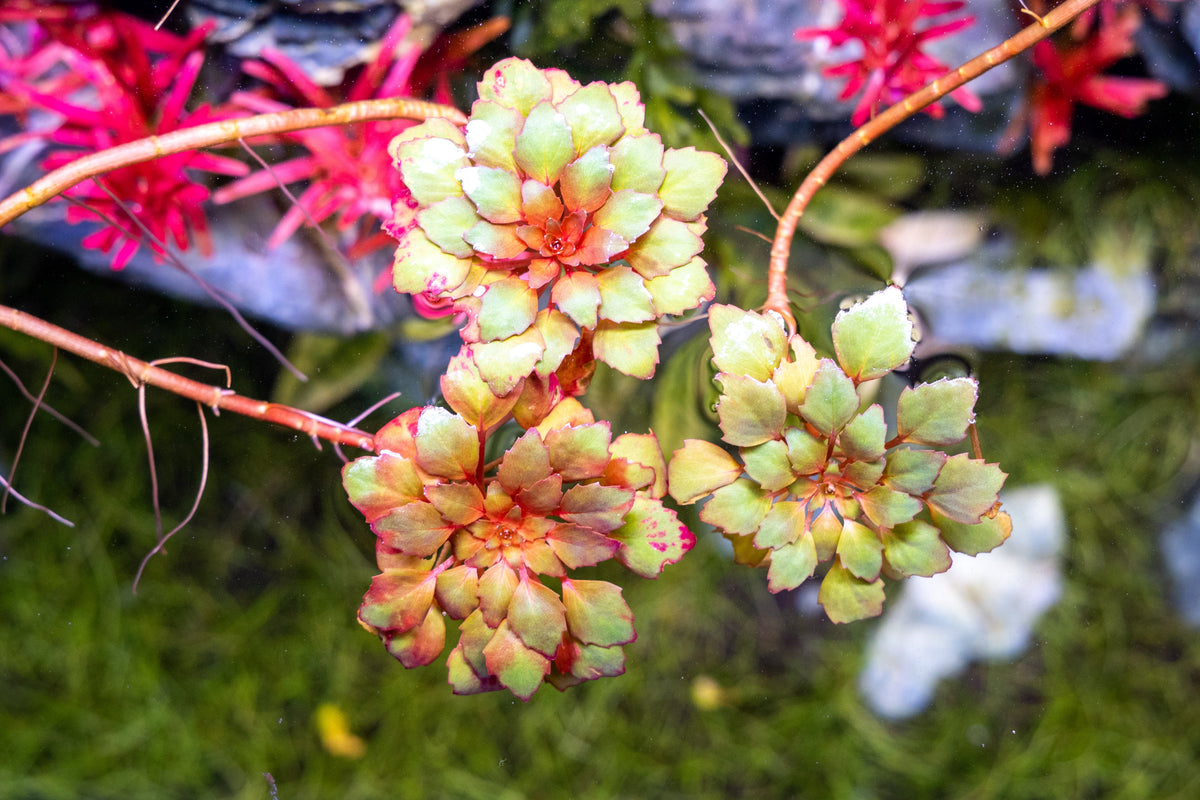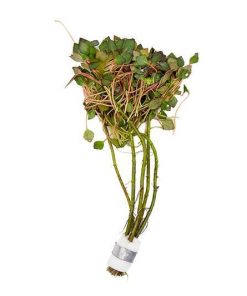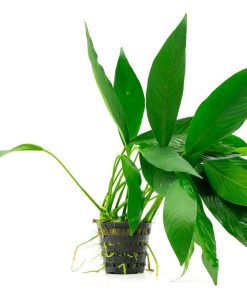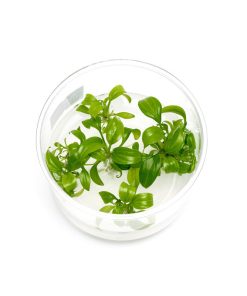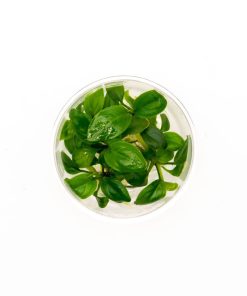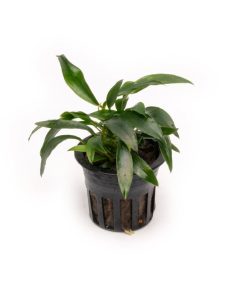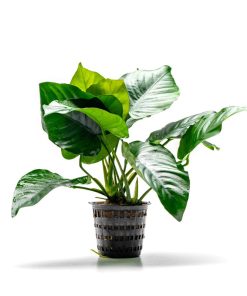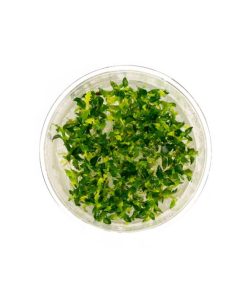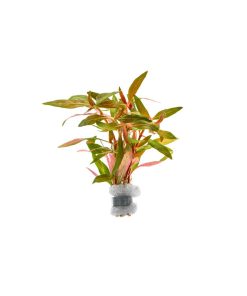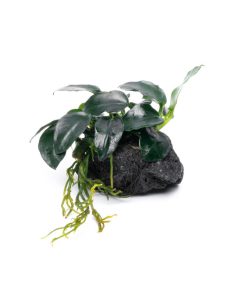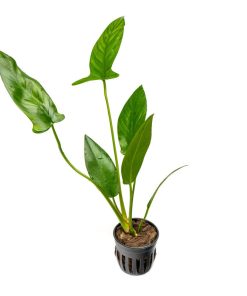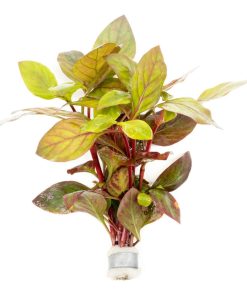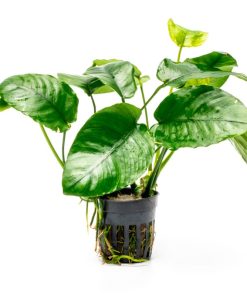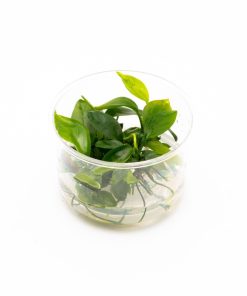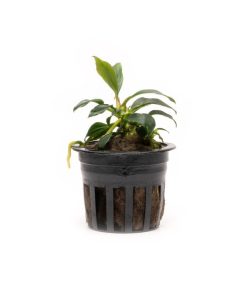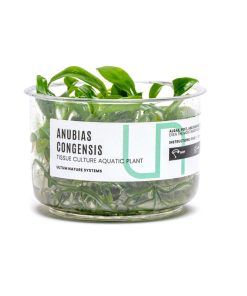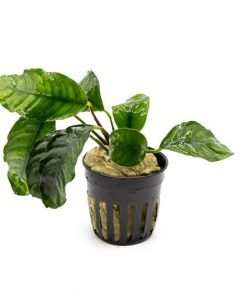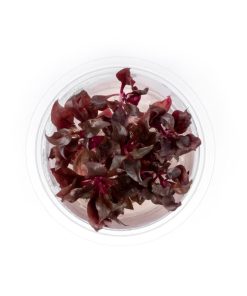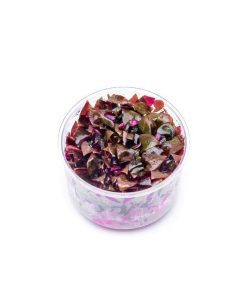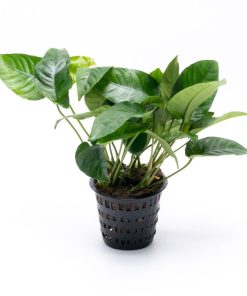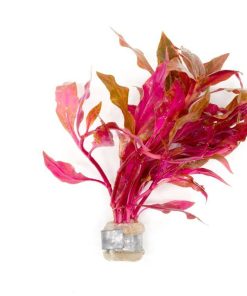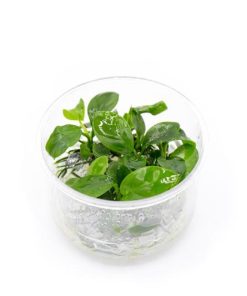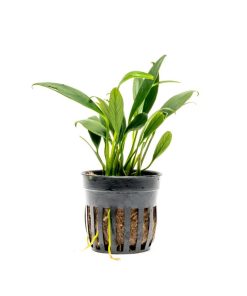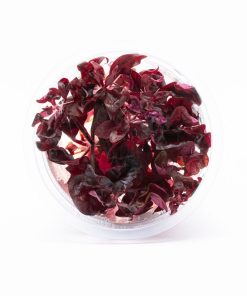Ludwigia Sedioides ACW
$ 12,99 $ 7,79
Common Name: Mosaic Plant, False Loosestrife, Ludwigia Sedioides
The mosaic plant is truly one-of-a-kind. Mosaic plants fit their name well, as the leaves of the plant radiate from the center stem like tiles laid in a mandala. The leaves are diamond-shaped and dark to light green, with jagged red edges. This incredibly unique plant has a stem that is rooted in the substrate, but its leaves float on the surface of the water. Though this plant is more commonly found cultivated in ponds it can be a stunning addition to an aquarium. A large tank is needed to accommodate the 3-5” width of mosaic plants, especially because they will cut off light to anything underneath them.
If lighting simulates seasonal changes, these plants will bloom profusely. The small yellow blossoms resemble buttercups. Mosaic plants propagate through the seed that is produced by its flower. They spread easily in warm water with full light. If lighting is set to simulate day/night cycle, these plants will close up during dark hours and unfurl to their full width in the light. Brighter light yields redder coloring in these plants.
Notes:
- Ludwigia can be very fragile. Be sure to handle this aquarium plant with care.
- Do not make drastic changes to the aquarium. Unstable parameters will result in melt and rotting of the aquarium plant.
- Remove the cotton surrounding the roots and plant into a quality substrate. For instructions on how to properly prep aquarium plants, click here.
- CO2 injection and quality aquarium soil will yield better growth.
- Please research appropriately to ensure your plant thrives.
Family Name: Onagraceae
Origin: South America
Height: Stem 10-23”, leaves float on surface
pH: 6.5-7.5
Care: Easy
Light: High
Co2: Not necessary
Propagation: Seed
Growth rate: Moderate
| Type | Loose (4-5 stems) |
|---|
Fast Shipping with Professional Packaging
Our long-standing relationship with UPS FedEx DHL and other carriers around the world allows us to offer various shipping options. Our warehouse staff are highly trained to package your goods exactly as per the specifications we provide. Your goods are thoroughly checked and secured properly prior to shipping. We ship to hundreds of thousands of customers daily in different countries. The fact that we're dedicated to becoming the largest online retailer in the World is obvious. Warehouses and distribution centers are located in Europe as well as the USA.
Please note that orders with more than one item are subject to a processing period that is based to the specific item.
Before shipping, all ordered products will be thoroughly inspected. Most orders are shipped within 48 hours. The time to deliver varies from 3-7 days.
Returns
The stock is dynamic and we do not completely manage it because multiple stakeholders are involved, including our warehouse and factory. The stock can change at any moment. Be aware that your order will be unable to fill once you've placed your order.
Our policy runs for 30 days. If you don't receive your product within the 30 days period, we are not able to provide a refund or an exchange.
The item must not be used, and it must be in its original condition. The item must be in its original packaging.
Related products
Aquatic Plant
Aquatic Plant
Aquatic Plant
Aquatic Plant
Aquatic Plant
Aquatic Plant
Aquatic Plant
Aquatic Plant
Aquatic Plant
Aquatic Plant
Aquatic Plant
Aquatic Plant
Aquatic Plant
Aquatic Plant
Aquatic Plant
Aquatic Plant
Aquatic Plant
Aquatic Plant
Aquatic Plant
Aquatic Plant
Aquatic Plant
Aquatic Plant
Aquatic Plant
Aquatic Plant
Aquatic Plant
Aquatic Plant
Aquatic Plant
Aquatic Plant
